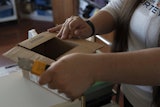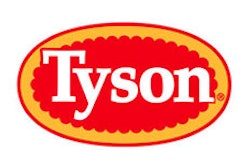In the great wait for consistent economic growth, many manufacturers put on hold investments in production equipment and technological upgrades so they could set aside cash for the next rainy day.
But manufacturing businesses considering a capital equipment investment may want to act now to take full advantage of long-standing capital equipment tax breaks set to expire on Dec. 31 and IRS equipment depreciation guidelines providing year-end benefits.
Here are specific cost-savings advantages manufacturers considering equipment financing at the end of the year should take into account:
Expiring Tax Breaks
For a limited time, qualifying manufacturers can write off 50 percent of the cost to acquire eligible equipment on 2013 tax returns. Since 2008, some level of accelerated depreciation — or bonus — has been available to equipment owners. These long-running tax breaks, however, will come to an end on Dec. 31, 2013, so manufacturers need to act soon to realize this substantial boost to their bottom lines.
All capital equipment is depreciated in some way, whether you pay cash, borrow or lease equipment. How you make that depreciation work for your business depends on your company’s current tax position.
If your business is a full taxpayer, using a loan or non-tax lease allows the business to claim depreciation, including any eligible bonus, directly. If this isn’t the case and your manufacturing business is an Alternative Minimum Taxpayer or has other limited-life tax credits, you may not be able to take full advantage of bonus depreciation directly. In this case, a tax lease may allow you to trade in the tax benefit for special lease pricing, resulting in an overall lower financing cost.
Tax Planning for Equipment Needs
If you acquired equipment in 2013 and plan to depreciate the assets using the MACRS table, you’ll need to monitor your fourth quarter equipment purchases carefully. The IRS creates depreciation tables assuming that the company has, on average, about half the year to use the equipment, regardless of which month the equipment was acquired. To take advantage of this, many companies buy equipment at the end of the year. Consider the advantages of making just two monthly financing payments on equipment acquired in November 2013, yet claiming six months of depreciation benefit for that piece of equipment in 2013.
To control for abuse, the IRS limits the amount of capital equipment that can be acquired in the fourth quarter. Manufacturers acquiring more than 40 percent of their annual capital equipment expenditures in the last three months of the year must apply the Mid-Quarter Convention to their depreciation claim for all equipment purchases made that year. The result can be a significant reduction in previously anticipated depreciation benefit — in some cases up to 50 percent less — with very little time to find other sheltering deductions. The result is a higher income tax liability for the business.
To maximize the overall depreciation benefit, manufacturers need to tightly manage fourth-quarter equipment purchases. If obtaining new equipment in the fourth quarter is unavoidable — cost overruns or emergency replacements happen often — consider a tax lease. A tax lease provides access to equipment but shifts tax ownership from the user to the lessor. Equipment acquisition through a tax lease won’t count toward your 40 percent Mid-Quarter Convention limit and still allows you to choose the equipment vendor and retain the option to own the equipment at the end of the lease.
Section 179
IRS Code Section 179 is an incentive created by the U.S. government to encourage businesses to invest in equipment, and it is particularly beneficial for companies with limited budgets. Under Section 179, any company purchasing $560,000 or less in capital equipment during 2013 can deduct up to $139,000 of that expense from its gross income.
Companies acquiring more than $560,000 in capital equipment during the year will need to manage the tax ownership of those assets in order to maintain a Section 179 write-off. By working with a qualified partner to lease assets over $560,000, the lease can often be structured so the finance company becomes the tax owner of the equipment, allowing you to maintain your Section 179 deduction on assets below that threshold.
To qualify for the Section 179 deduction, equipment must be purchased and put into use between Jan. 1 and Dec. 31, 2013, and must fall within certain equipment-type definitions. Detailed descriptions of qualifying equipment can be found by visiting the IRS web site.
Favorable Pricing
Leasing companies use the same Mid-Quarter Convention concept as other businesses to boost their own corporate tax deductions. Since lessors have large holdings of equipment that are depreciated, some of their most attractive lease pricing is offered to customers during the fourth quarter of the year. Make sure to compare your financing options on an after-tax basis to see which option is best for your bottom line.
Also, look for a knowledgeable, financially strong equipment finance company that understands the unique needs of your manufacturing business and the nuances of leasing manufacturing equipment during the fourth quarter. Then, you’ll be ahead of the competition when the clock strikes midnight on Dec. 31, 2013.
Always consult with a tax advisor before making equipment-purchasing decisions.
Peter K. Bullen is senior vice president Key Equipment Finance – Bank Channel. He can be reached at [email protected] or at 216-689-8579.






















